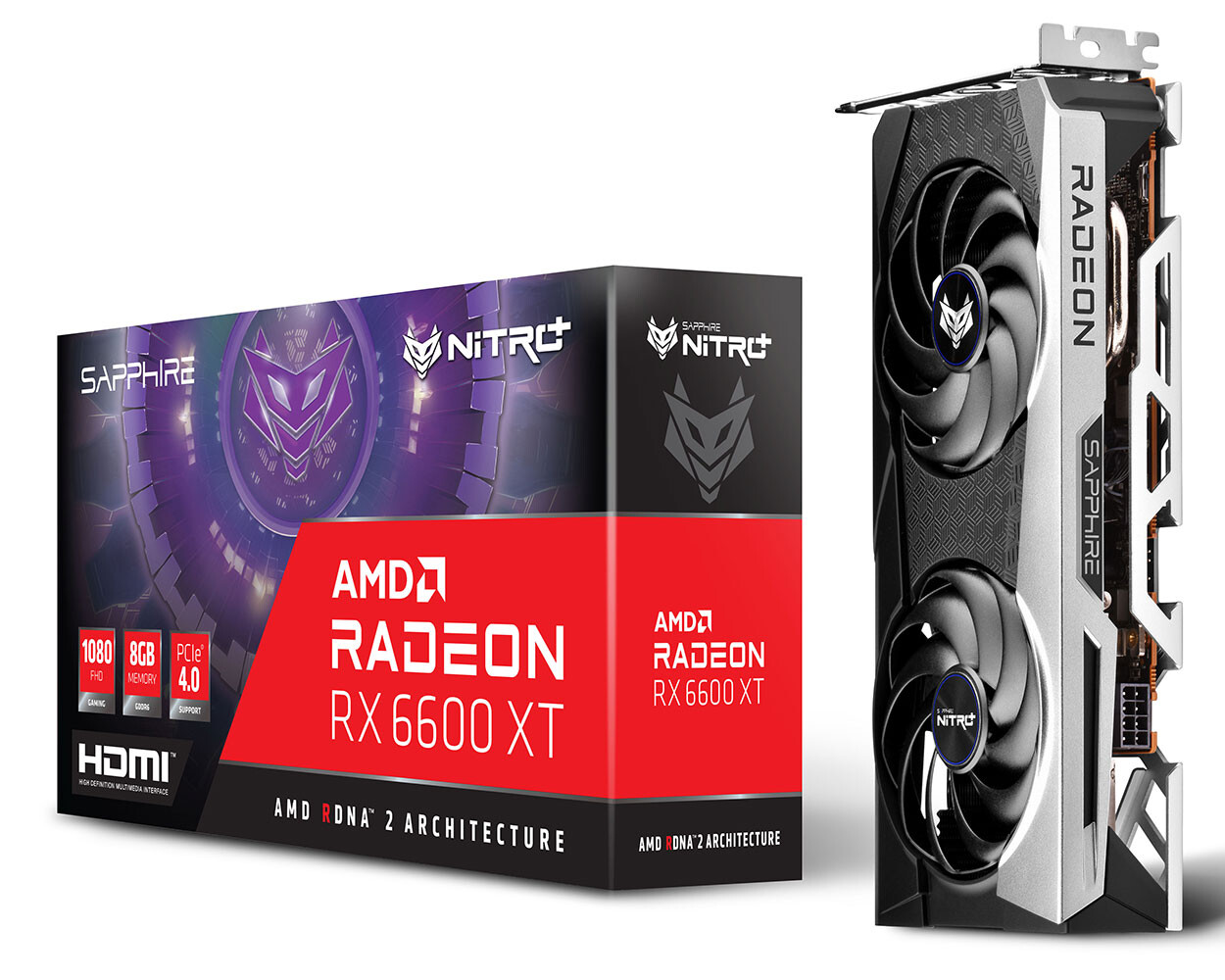a series of new AMD Radeon RX 6600 XT graphics cards, including the premium series of RX 6600 XT Pulse and the high-end series of RX 6600 XT NITRO. Both are two-slot thick designs in the strict sense, compact structures, and use dual-fan cooling solutions. NITRO+ is characterized by a higher factory OC clock frequency, a more luxurious radiator, and a wave-shaped aluminum fin design in the radiator, a fan with a mesh impeller, dual BIOS, silver metal backplane, an addressable RGB LED Illuminated sapphire logo, and a 3-pin ARGB header, so that users can synchronize the system lighting effects with the graphics card lighting effects
On the other hand, the RX 6600 XT Pulse uses a simpler design without the shiny two-color appearance of NITRO+. No luminous logo, no extra RGB header, and no dual BIOS. But it still has a similar combination of wavy fins and meshes impeller, as well as a metal backplate. The factory OC status of the card is lower than NITRO+, and the price is expected to be closer to the suggested retail price. Sapphire has not disclosed the acceleration frequency of these two cards, but both cards have 16Gbps GDDR6 memory and use a single 8-pin power supply design.
AMD Radeon RX 6600 XT will be equipped with Navi 23 XT core, with a complete 2048 stream processor, memory width is 128 bits, 8GB GDDR6, 32MB Infinity Cache. The basic frequency of the public version is 2359 MHz, and the acceleration frequency is 2589 MHz.

